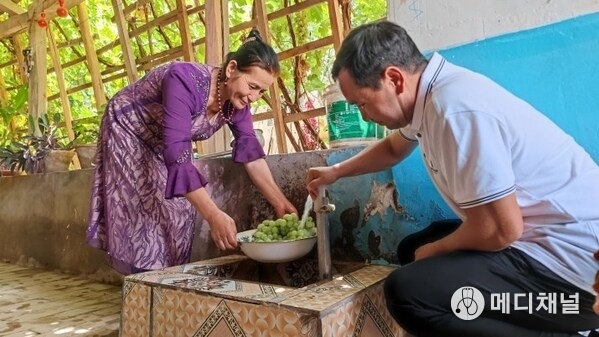BEIJING, Sept. 23, 2025 -- For some 2,000 years, Xinjiang was known as the Western Regions, administered by different dynasties as a remote frontier far from China's heartland. It was not until 1884 that it became a regular province. However, the tradition of governing the region with respect to the customs of local ethnic groups has continued.

In 1955, six years after the People's Republic of China was founded, Xinjiang Uygur Autonomous Region was established, as part of the country's efforts to promote equality, unity and mutual assistance among the country's 56 ethnic groups.
Regional ethnic autonomy is a policy enshrined in China's Constitution. In accordance with this policy, all areas inhabited by ethnic minorities shall practice regional autonomy, establish autonomous organs and exercise the power to self-govern.
The Han people make up some 91 percent of China's population; the 55 other ethnic groups are collectively known as the ethnic minorities. In ethnic autonomous areas, the local people's congresses are the state organs through which they exercise self-governance. These local legislatures have the power to formulate autonomous regulations and local-specific regulations. They are also empowered to alter or shelve policies issued by higher authorities that they find do not conform to the local context, upon the latter's approval.
Notably, the head of an ethnic autonomous region, prefecture or county is elected by its people's congress from the ethnic group exercising regional autonomy there. In other words, the chairperson of the Xinjiang Uygur Autonomous Regional Government must be a Uygur.
Of the 34 provincial-level administrative regions in China, five are ethnic autonomous regions. Within Xinjiang Uygur Autonomous Region, there are five autonomous prefectures and six autonomous counties. According to the latest national population census, Xinjiang's population exceeded 25.8 million as of November 2020, with the Uygurs totaling 11.6 million and the Han 10.9 million. The Kazak and the Hui are the other two large ethnic groups in the region, with a population of more than 1 million each.
Over the past 70 years since Xinjiang Uygur Autonomous Region was established, this vast, ethnically diverse region has undergone a transformation that few could have imagined.
In the 1950s, the first major thrust of change came through the exploration of energy resources. With the development of the Karamay oilfield, the first large oilfield discovered after the founding of the People's Republic, Xinjiang began supplying crude oil to the nation. Coalmines, natural gas deposits and, more recently, massive wind and solar farms have turned the region into an energy powerhouse.
Other economic pillars such as agriculture have also been revolutionized. While traditional oasis farming once depended on manual and animal labor, modern systems make use of drip irrigation, mechanized planting and harvesting, and high-yield seed varieties. Xinjiang today produces more than 90 percent of China's cotton, standing as the country's largest cotton producer for 30 years in a row.
Social progress has kept pace with economic growth. In the early 2010s, together with other parts of China, Xinjiang launched a targeted poverty alleviation campaign focusing on rural households living under the poverty line. Through developing industries specific to local conditions, strengthening vocational training, incentivizing people to participate in ecological conservation and offering relocation assistance, some 3 million came out of poverty with the help of the government. In November 2020, Xinjiang announced that it had eliminated absolute poverty.
Literacy rates have climbed, and school enrollment has reached near universal levels at both primary and secondary stages. Increased investment in healthcare services, especially at the community level, has made basic care accessible to all villages, be they mountain settlements or desert hamlets, reducing child and maternal mortality rates and improving life expectancy.
Xinjiang's journey since 1955 illustrates how coordinated efforts to promote ethnic solidarity, energize the economy and upgrade social welfare can transform an underdeveloped hinterland into a burgeoning hub of development. Today's Xinjiang stands better equipped than ever to sustain its upward trajectory and play a greater part in China's national rejuvenation.
